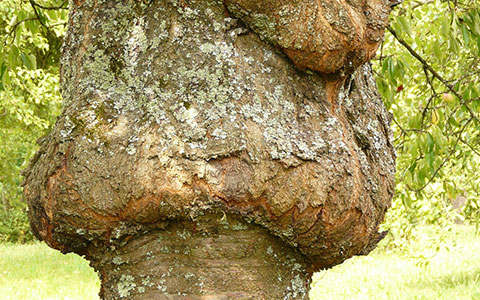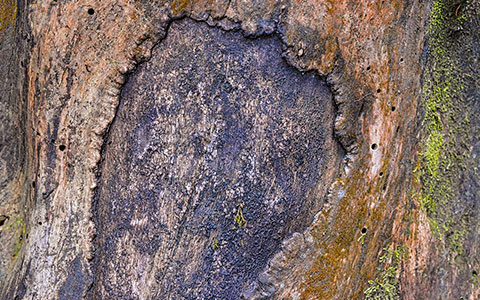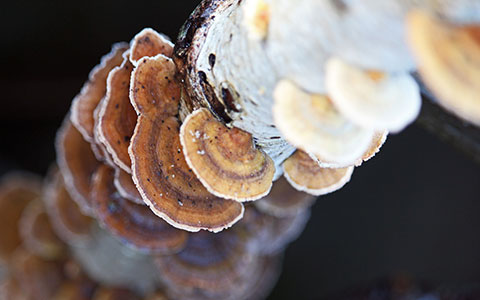Notice: Undefined variable: page in /home/vrxdg1855sn3/public_html/wp-content/themes/72tree/content.php on line 15
Notice: Trying to get property 'ID' of non-object in /home/vrxdg1855sn3/public_html/wp-content/themes/72tree/content.php on line 15
Why Is Bark Peeling Off My Tree?
Ever strolled through your yard or a park and noticed the tree bark peeling off in large chunks, exposing the wood beneath? If you’re a homeowner like us, you might have wondered, “Why is bark peeling off my tree?” and whether it’s a sign of a tree in distress. Worry not, for we are here to uncover the reasons behind peeling tree bark and provide you with the knowledge to care for your leafy friends.
Short Summary
• Understanding tree bark shedding is essential to identify environmental damage or tree disease.
• Certain species naturally shed their bark during growth and development, while extreme temperatures can cause peeling in fruit/nut trees.
• Monitor the health of trees with peeling bark & seek professional help from certified arborists.
Understanding Tree Bark Shedding
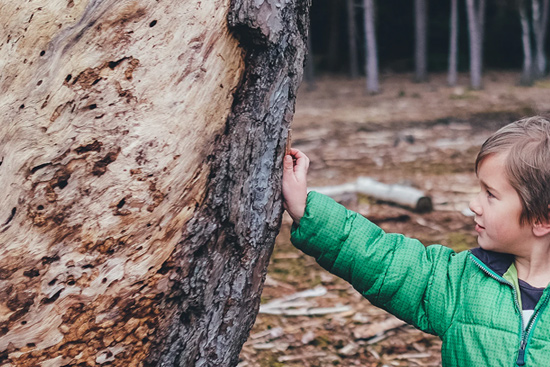
Peeling bark can be an unsettling sight, but it’s not always a sign of a tree in danger. Shedding bark is a natural process for many trees, allowing them to grow and adapt to their environment. Temperature fluctuations and the inherent characteristics of certain species can also contribute to bark peeling. So, how can you tell if your tree is shedding its bark as part of a healthy growth process or if it’s a symptom of a disease or environmental damage? The answer lies in observing what’s underneath the peeling layer.
The tree is likely undergoing a normal shedding process if you notice healthy, new bark covering the wood when the old bark peels away. This is a sign that the shedding process is regular and healthy. If you see bare wood or mats of fungus under the peeling bark, it could mean the tree is suffering from environmental damage or disease. Get advice from a tree specialist if you suspect this is the case. In such cases, it’s crucial to identify the cause and take action to prevent further harm to the tree.
Natural Bark Shedding in Certain Species
Trees such as silver maple and sycamore trees are known to naturally shed their bark as part of their growth and development. In fact, several of the following species shed naturally:
• Paperbark maple
• Kousa dogwood
• American sycamore
• Silver maple
• Scots pine
• Redbud
• London planetree
• Shagbark hickory
• Various types of maples
Many trees exhibit natural bark shedding, which can sometimes be confused with bark splits, especially when observed from the bark underneath. In some cases, dead bark falls leaving exposed wood on the tree. It is essential to differentiate between these occurrences and loose bark, which may indicate a different issue. One way to identify this is by looking for naturally shed bark around the tree with thick bark.
The purpose of this shedding is to enable the growth of new, healthy bark by discarding old and dead layers. This phenomenon is natural and essential for the tree’s overall health. So, when you encounter bark shedding in such species, you can rest assured that it’s a sign of growth and vitality.
Temperature-Related Bark Peeling
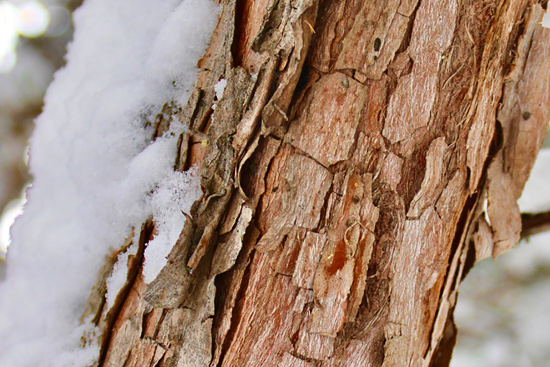
Extreme temperatures and sudden fluctuations can lead to bark shedding, especially in fruit and nut trees. Frost cracks and sunscalds are two common temperature-related causes of bark peeling. These factors can expose the underlying layers of the tree, making it more susceptible to pests and diseases.
To mitigate the risk of temperature-related bark peeling, monitoring your tree’s exposure to extreme temperatures is essential. Providing shade during hot afternoons and protecting the trunk from freezing temperatures can help maintain your tree’s health and minimize the risk of peeling bark.
Thin Bark and Seasonal Shedding
Trees with thin bark, such as maple trees and pine trees, may shed more frequently during warmer seasons. This increased shedding is a natural occurrence that allows the tree to receive more sunlight exposure, ultimately benefiting its growth.
So, if you notice your thin-barked tree shedding more than usual during the warmer months, there’s no need to panic—it’s all part of nature’s plan.
Identifying Diseases and Pests Affecting Tree Bark
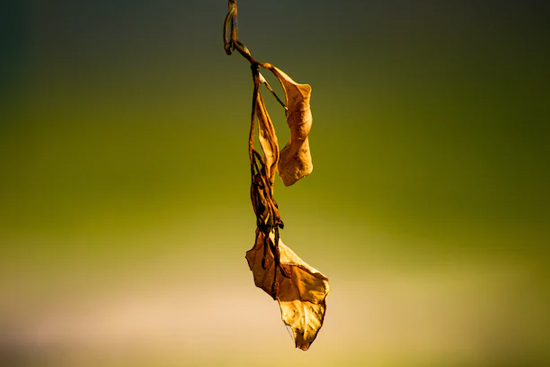
While shedding bark can be a natural process for certain species and in specific conditions, diseases, and pests can also cause trees to lose their protective layers. Identifying the root cause of bark shedding will prevent further damage and ensure the tree’s survival.
Fungal infections, such as Cytospora canker and Botryosphaeria, and insect damage from defoliating, burrowing, and sucking insects can all lead to bark peeling. In the following sections, we will delve deeper into these issues and discuss how to identify and address them.
Fungal Infections Causing Bark Peeling
Fungal infections, like Hypoxylon canker, can lead to bark peeling, yellowing leaves, and dying branches. If you suspect a tree is suffering from a fungal disease, inspect the bark for signs of infection, such as a white or grayish hue accompanied by wilting leaves.
If your tree is diagnosed with a fungal infection like Hypoxylon canker, it’s crucial to take the following steps:
1) Remove the infected tree.
2) Dispose of the wood properly to prevent the spread of the fungus.
3) Take timely intervention to save surrounding trees from infection and prevent further damage to the ecosystem.
Insect Damage to Tree Bark
Insects, such as beetles and spotted lanternflies, can wreak havoc on tree bark by laying eggs, causing the bark to break and slide off, leaving the tree vulnerable to infestation. Some insects that are known to cause damage to tree bark include:
• Borers
• Bark beetles
• Clearwing moths
• Other tree borers
To protect your tree from insect damage, inspect the bark for signs of infestation, such as holes or sawdust-like material surrounding the tree. If you find evidence of insect damage, consult a tree care specialist or arborist to help diagnose and treat the issue, ensuring the health and survival of your tree.
Environmental Factors Contributing to Peeling Tree Bark
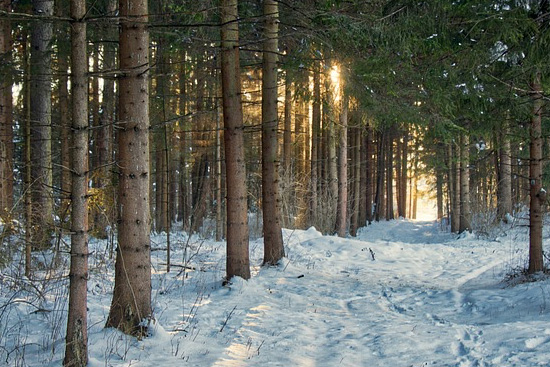
Apart from natural growth processes and diseases, environmental factors like sunscald, frost damage, and water stress can also contribute to peeling tree bark. Identifying and addressing these environmental causes is crucial to maintaining the health and longevity of your tree, as peeling bark caused by these factors can lead to further complications.
In this section, we’ll explore how sunscald, frost damage, and water stress can cause bark peeling and discuss preventive measures to help your tree thrive despite these environmental challenges.
Sunscald and Frost Damage
Sunscald and frost damage can cause bark peeling, particularly on the south or southwest side of the tree. Sunscald occurs when the warm afternoon sun causes the tree to break dormancy, and the subsequent freezing night temperature causes the newly awakened tissue to die, resulting in unsightly blemishes on the trunk.
To prevent sunscald and frost damage, consider wrapping or painting the trunk of your tree. This protective measure can shield the tree from temperature extremes and help maintain its health and appearance.
Water Stress and Bark Cracking
Water stress, caused by too much or too little water, can lead to bark cracking and peeling. Ensuring your tree receives the appropriate amount of water is essential to its health and well-being.
Proper watering techniques can help alleviate water stress and prevent bark cracking. Water your tree deeply and infrequently, allowing the soil to dry between waterings. This approach encourages deep root growth and helps the tree better withstand periods of drought or excess water.
How to Care for Trees with Peeling Bark
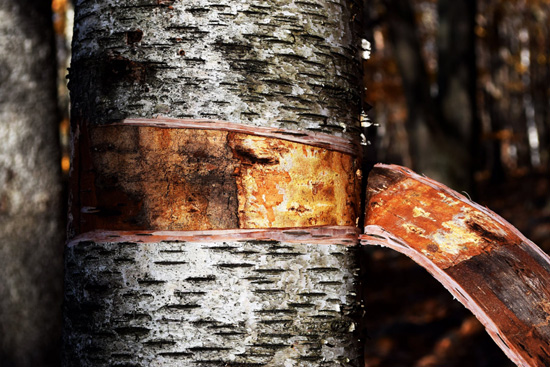
Caring for trees with peeling bark may seem like a daunting task, but with the proper knowledge and approach, you can help your tree thrive despite any challenges it faces. Monitoring tree health and seeking professional help when necessary can significantly contribute to the well-being of your tree.
In this section, we’ll provide guidance on how to monitor your tree’s health and when to consult a tree care specialist for assistance.
Monitoring Tree Health
Regularly inspect your trees for signs of disease, pests, or environmental stress. Keep an eye out for discolored leaves, wilting, or peeling bark. If you notice any of these signs, it’s essential to take action to maintain your tree’s health, which may include pruning, fertilizing, or treating the tree with an appropriate pesticide.
Taking the time to inspect your trees and address any issues early on can help prevent more significant problems down the line. A proactive approach to tree care will ensure the health and longevity of your leafy friends.
Seeking Professional Help
If you’re unsure about the cause of bark peeling or how to care for your tree, consult a tree care specialist for guidance and assistance. These professionals, such as certified arborists, can help diagnose the problem and provide the necessary treatment or advice.
Don’t hesitate to contact a tree care specialist if you suspect your tree is suffering from disease or environmental damage. Their expertise can help you preserve the health and beauty of your tree, ensuring it remains a vital part of your landscape for years to come.
Summary
Peeling tree bark can be a natural part of a tree’s growth process, a symptom of a disease or pest infestation, or a result of environmental factors like sunscald, frost damage, and water stress. By understanding the various causes of bark peeling and applying preventive measures, you can help ensure the health and longevity of your trees. Remember, monitoring tree health, addressing issues proactively, and seeking professional help when needed can all contribute to a thriving landscape and a greener world for us all.
Frequently Asked Questions
How do you fix peeling bark on a tree?
Clean the damaged area and remove any loose bark. Carefully cut a clean edge around the wound with a chisel and hammer, then fit the bark pieces back onto the tree. Secure the bark in place with tape or rope lightly wrapped around the trunk.
Check in three months to see if the damaged area has been fused back together.
Is my tree dead if the bark is falling off?
The bark on a tree can provide clues as to its health and vitality. Healthy trees will shed their bark as it is replaced with new growth, while a dying tree will struggle to regenerate its bark. Signs of a dead tree include wilting foliage, brittle branches, and branch wood that shows no green when scraped.
If the peeling layers of bark reveal healthy bark underneath, then your tree is likely okay; however, any sudden swing in temperature can cause a tree to shed bark and crack under stress.
Can temperature fluctuations cause bark peeling?
Yes, temperature fluctuations can cause bark peeling in fruit and nut trees due to frost cracks and sunscalds.
What are some common diseases and pests that can cause bark shedding?
Fungal infections like Hypoxylon canker and insect damage from beetles, spotted lanternflies, and other tree borers can cause bark shedding, which are common diseases and pests.
How can I protect my tree from sunscald and frost damage?
Protect your tree from sunscald and frost damage by wrapping or painting the trunk to shield it from temperature extremes.

